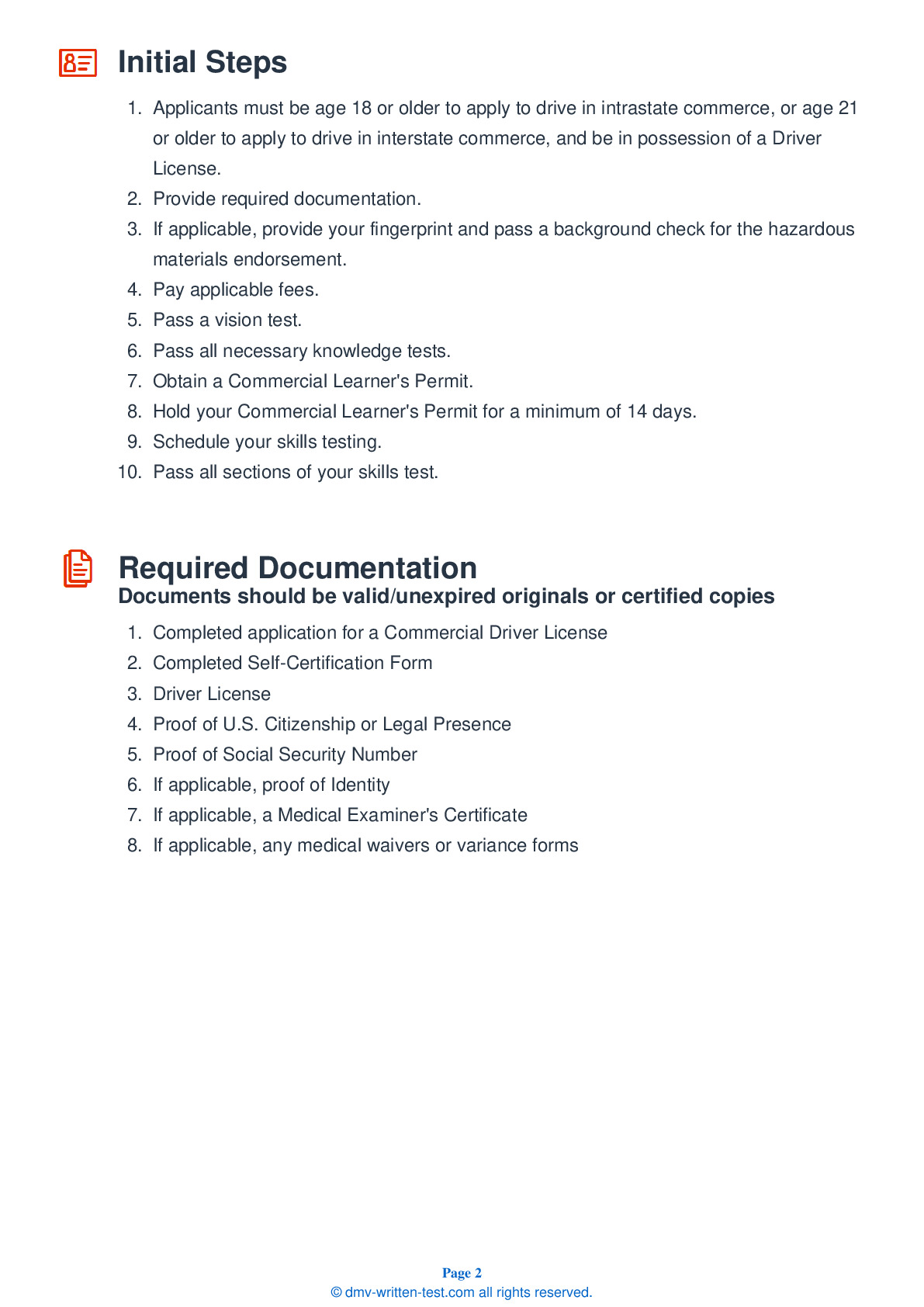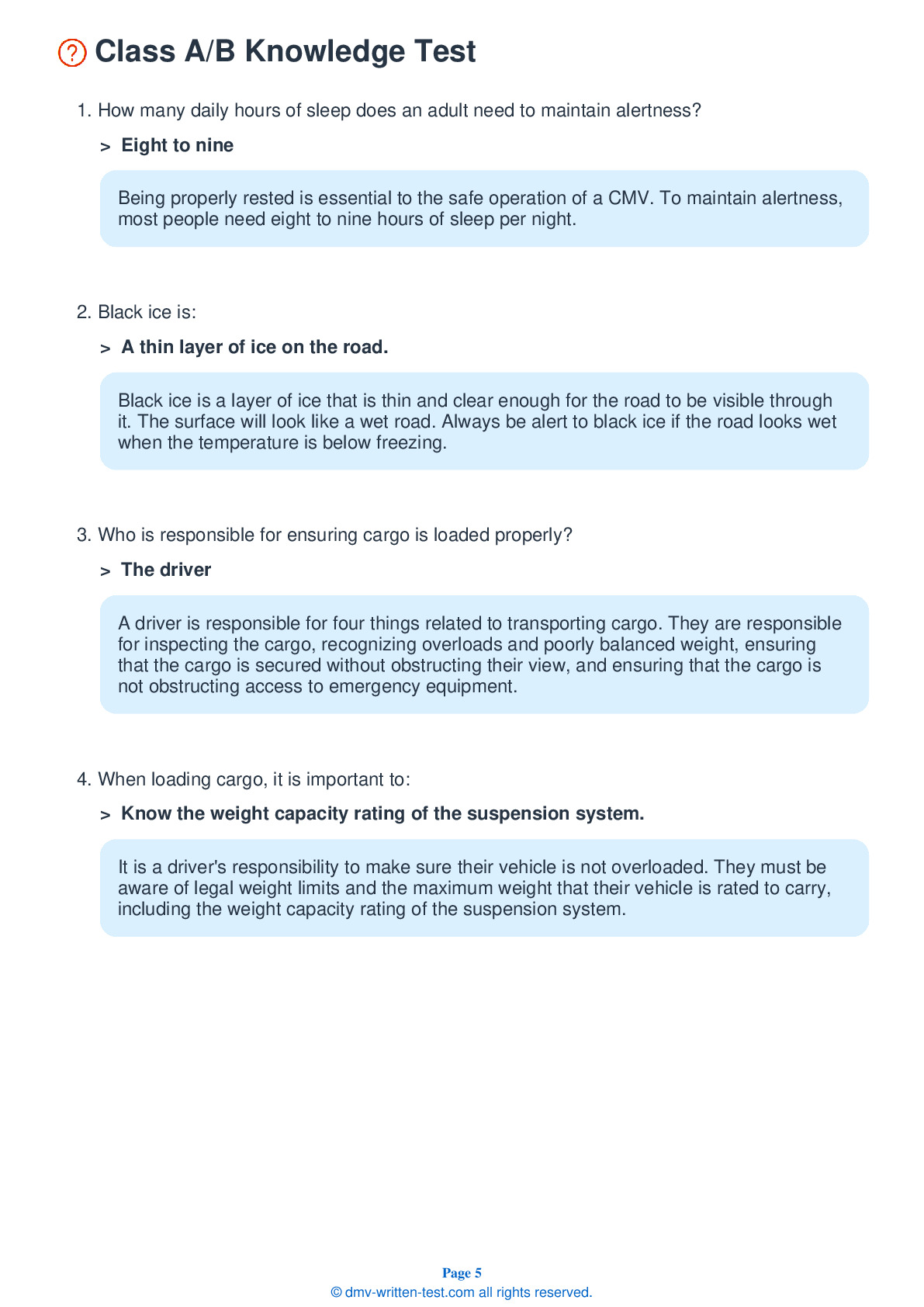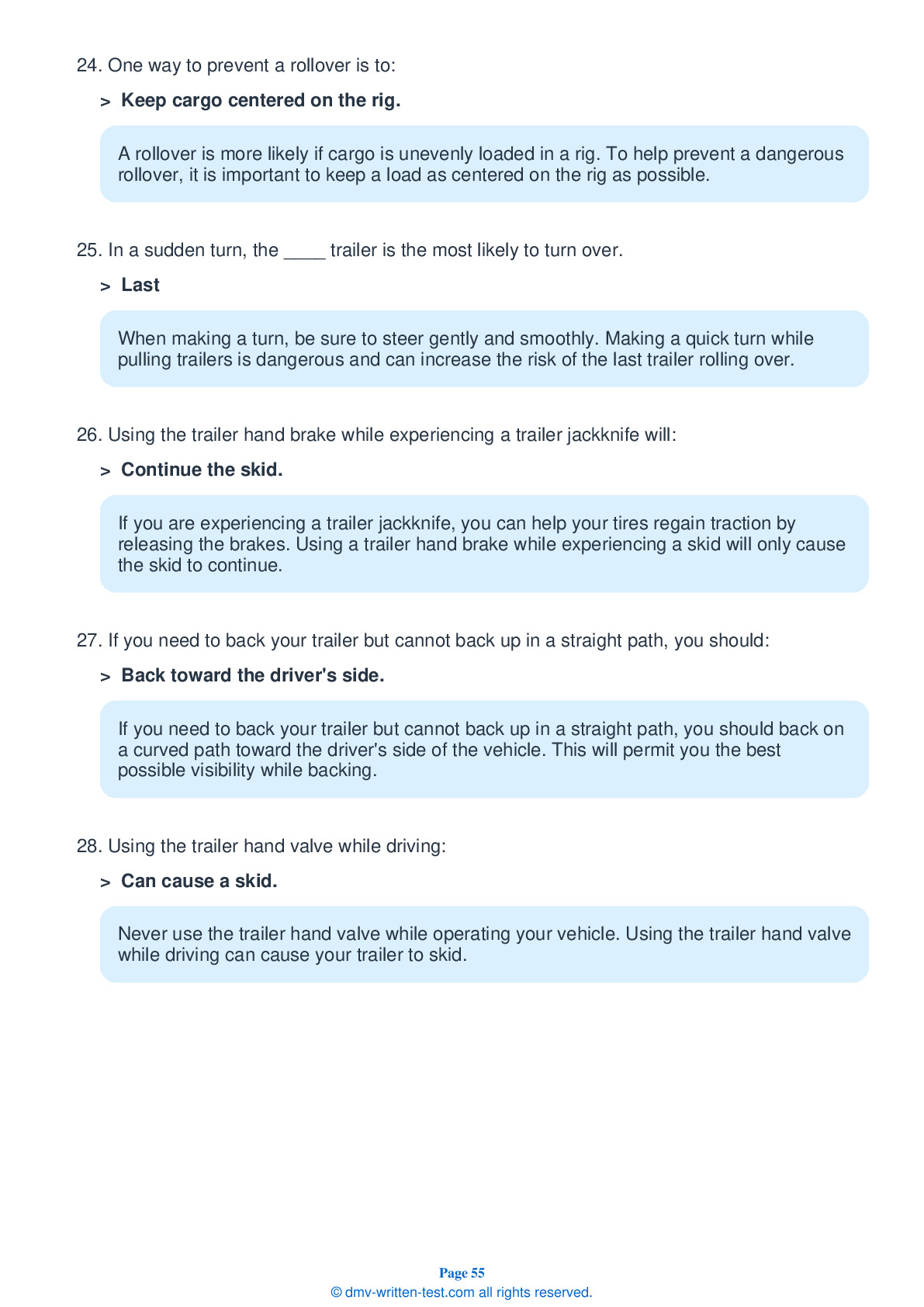Combination
All applicants who are applying for a Class A CDL should be prepared to take the Combination test. This test covers information found in Section 6 of the Alaska Commercial Driver License Manual. Section 6 provides the information needed to safely operate tractor-trailers, doubles, triples, and straight trucks with trailers. The test is made up of 20 multiple-choice questions, and applicants will need to correctly answer a minimum of 16 questions to pass. The Combination test is not a replacement for the Double/Triple endorsement test.
Number of Question
Passing Score
1. When coupling, you should:
Explanation
When coupling air brake hoses, you should make sure the proper pairs of gland hands are connected. They are sometimes color-coded to help drivers avoid mistakes. Typically, blue is used for service lines and red is used for emergency lines.
2. In an empty combination vehicle, the stiff suspension springs and strong brakes will have:
Explanation
An empty combination vehicle will come to a complete stop more slowly than a fully-loaded vehicle. With less weight in a trailer, the stiff suspension springs and strong brakes will have lower traction than they would if the vehicle carried more weight.
3. Rearward amplification refers to:
Explanation
The "crack-the-whip" effect is a result of rearward amplification. If not properly handled, a trailer can tip over due to rearward amplification.
4. What does an Anti-Lock Braking System (ABS) do?
Explanation
An Anti-Lock Braking System (ABS) helps prevent wheel lockup during hard braking. If ABS detects impending lockup, it reduces braking pressure to a safe level.
5. If the emergency air line loses pressure:
Explanation
The emergency air line controls the emergency brakes on a combination vehicle. A loss of air pressure in the emergency line will cause the emergency trailer brakes to activate.
6. When coupling a trailer:
Explanation
When coupling, make sure you couple matching glad hands. They are often color-coded to help drivers avoid mistakes. Typically, blue is used for service lines and red is used for emergency lines.
7. Older trailers are not equipped with spring brakes. This means that if the air supply for a vehicle's air braking system leaks away:
Explanation




